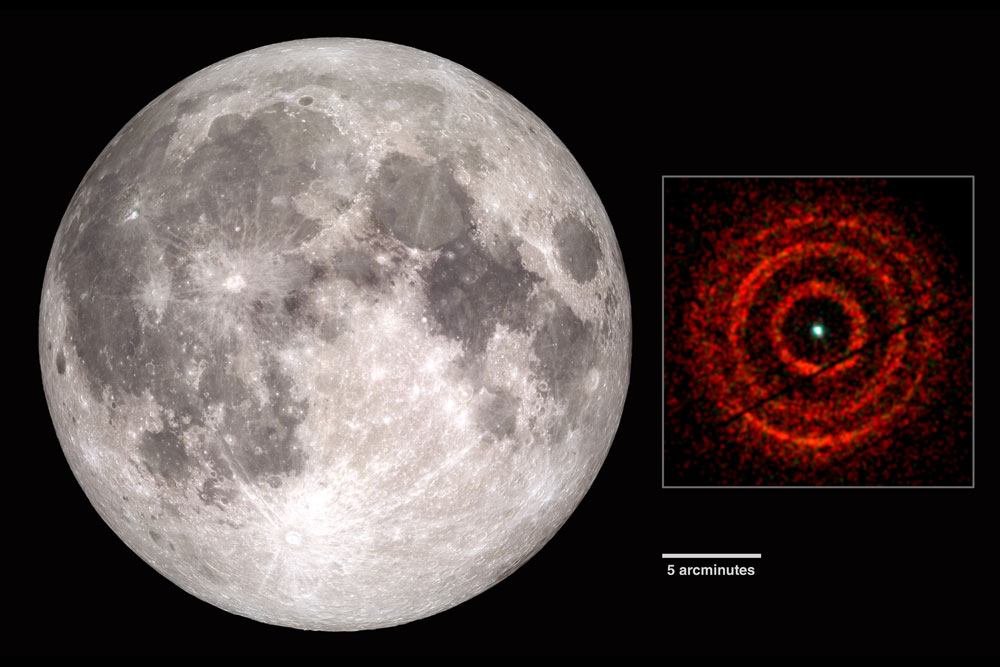Rare View of Black Hole Caught in 'Bull's-Eye' Eruption (Video)

Rings of X-ray light flare and fade around an active black hole in a stunning new set of observations by NASA's Swift space telescope.
The bull's-eye structure around the erupting black hole results from the jostling and reflection of X-ray light by dust, which creates a series of "echoes" that are visible in this video.
The black hole orbits in tandem with a sunlike star at the heart of the system V404 Cygni, which lies about 8,000 light-years from Earth. Swift spotted an outburst of activity from the black hole on June 15, and the spacecraft's X-ray Telescope detected the expanding rings during observations made in late June and early July, NASA officials said.
The black hole is easy to see in the new images without the rings pointing the way; it appears as a bluish-white dot. But the bull's-eye really marks the spot of the invisible interstellar dust between Earth and the system.
The various layers of dust, which are found between 4,000 and 7,000 light-years from Earth, reflect some of the X-rays over toward us as they fan out in all directions from the black hole.
"The flexible planning of Swift observations has given us the best dust-scattered X-ray ring images ever seen," Andrew Beardmore, an astronomer at the University of Leicester in England and leader of the investigating team, said in a statement. "With these observations, we can make a detailed study of the normally invisible interstellar dust in the direction of the black hole."
V404 Cygni's arousal on June 15 was likely caused by material falling into the black hole, part of a cycle that repeats every few decades, researchers said. The companion star is about 10 percent as massive as the black hole, and the behemoth pulls a stream of gas away from it over time. The cool gas can resist the black hole's pull, but when enough gas builds up and heats up, it's suddenly pulled into the center of the black hole, triggering a sudden outburst of X-rays. Astronomers caught its most recent eruption before this one in 1989.
Breaking space news, the latest updates on rocket launches, skywatching events and more!
The outburst offers a rare opportunity to gather data about the nearby binary system, the black hole within it and the normally undetectable interstellar dust clouds that stand in its way, NASA officials said.
Email Sarah Lewin at slewin@space.com or follow her @SarahExplains. Follow us @Spacedotcom, Facebook and Google+. Original article on Space.com.

Sarah Lewin started writing for Space.com in June of 2015 as a Staff Writer and became Associate Editor in 2019 . Her work has been featured by Scientific American, IEEE Spectrum, Quanta Magazine, Wired, The Scientist, Science Friday and WGBH's Inside NOVA. Sarah has an MA from NYU's Science, Health and Environmental Reporting Program and an AB in mathematics from Brown University. When not writing, reading or thinking about space, Sarah enjoys musical theatre and mathematical papercraft. She is currently Assistant News Editor at Scientific American. You can follow her on Twitter @SarahExplains.

